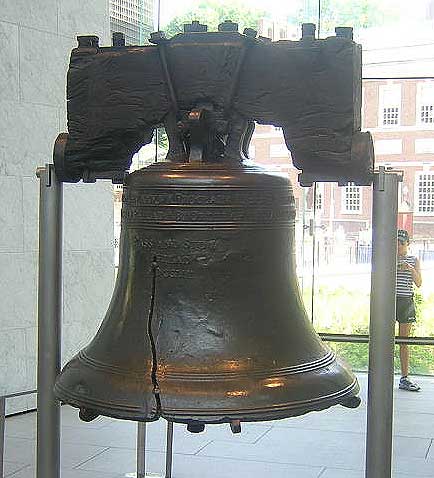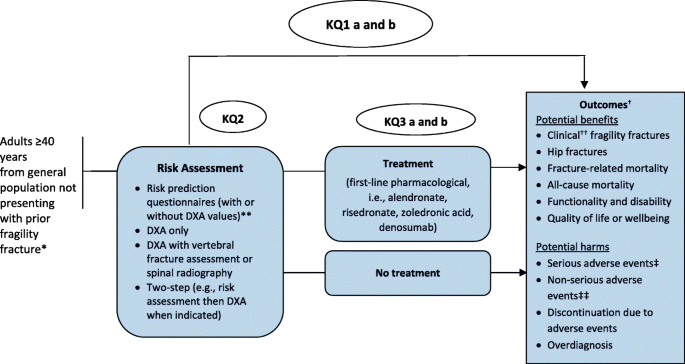
Fracture The Flag Meaning
| Blowout fracture | |
|---|---|
| An orbital blowout fracture of the floor of the left orbit. | |
| Specialty | Emergency medicine |
Capture the Flag (Spanish: Atrapa la bandera) is a 2015 Spanish computer-animated science-fiction adventure comedy film directed by Enrique Gato and written by Patxi Amezcua. Produced by 4 Cats Pictures and animated by Lightbox Entertainment, the film is. Here at GTX you can change your Fracture the Flag server for any other game we host. We do not scrimp on server specs meaning we can give our Ark servers.
An orbital blowout fracture is a traumatic deformity of the orbital floor or medial wall, typically resulting from impact of a blunt object larger than the orbital aperture, or eye socket. There are two broad categories of blowout fractures: open door, which are large, displaced and comminuted, and trapdoor, which are linear, hinged, and minimally displaced. They are characterized by double vision, sunken ocular globes, and loss of sensation of the cheek and upper gums due to infraorbital nerve injury.[1]
In pure orbital blowout fractures, the orbital rim (the most anterior bony margin of the orbit) is preserved, while with impure fractures, the orbital rim is also injured. With the trapdoor variant, there is a high frequency of extra-ocular muscle entrapment, despite minimal signs of external trauma, a phenomenon referred to as a 'white-eyed' orbital blowout fracture.[2] They can occur with other injuries such as transfacial Le Fort fractures or zygomaticomaxillary complex fractures. The most common causes are assault and motor vehicle accidents. In children, the trapdoor subtype are more common.[3]
Surgical intervention may be required to prevent diplopia and enophthalmos. Patients that are not experiencing enophthalmos or diplopia, and that have good extraocular mobility can be closely followed by ophthalmology without surgery.[4]
Signs & Symptoms[edit]
Some clinically observed signs and symptoms include:[5][6] Rock of ages hymn lyrics.
- Orbital pain
- Eyes displaced posteriorly into sockets (enophthalmos)
- Limitation of eye movement
- Loss of sensation (hypoesthesia) along the trigeminal (V2) nerve distribution
- Seeing-double when looking up or down (vertical diplopia)
- Orbital and lid subcutaneous emphysema, especially when blowing the nose or sneezing
- Nausea and bradycardia due to oculocardiac reflex inability to elevate eye ball,and move eyeball downward due to inferior rectus entrapment
Causes[edit]
Common medical causes of blowout fracture may include:
- Direct orbital blunt injury
- Sports injury (squash ball,[7] tennis ball etc.)
Mechanism[edit]
The force of a blow to the orbit is dissipated by a fracture of the surrounding bone, usually the orbital floor and/or the medial orbital wall. In blowout fractures, the medial wall is fractured indirectly. When an external force is applied to the orbital cavity from an object whose diameter is larger than that of the orbit, the orbital contents are retropulsed and compressed.[8] The consequent sudden rise in intraorbital pressure is transmitted to the walls of the orbit, which ultimately leads to fractures of the thin medial wall and/or orbital floor. Theoretically, this mechanism should lead to more fractures of the medial wall than the floor, since the medial wall is slightly thinner (0.25 mm vs 0.50 mm).[9] However, it is known that pure blowout fractures most frequently involve the orbital floor. This may be attributed to the honeycomb structure of the numerous bony septa of the ethmoid sinuses, which support the lamina papyracea, thus allowing it to withstand the sudden rise in intraorbital hydraulic pressure better than the orbital floor.[10]
In children, the flexibility of the actively developing floor of the orbit fractures in a linear pattern that snaps backward. This is commonly referred to as a trapdoor fracture.[4] The trapdoor can entrap soft-tissue contents, thus causing permanent structural change that requires surgical intervention.[4]
Diagnosis[edit]

Diagnosis is based on clinical and radiographic evidence. Periorbital bruising and subconjunctival hemorrhage are indirect signs of a possible fracture.
Imaging[edit]
Thin cut (2-3mm) CT scan with axial and coronal view is the optimal study of choice for orbital fractures.[8][11]
Plain radiographs, on the other hand, do not have the sensitively capture blowout fractures.[12] On Water's viewradiograph, polypoid mass can be observed hanging from the floor into the maxillary antrum, classically known as teardrop sign, as it usually is in shape of a teardrop. This polypoid mass consists of herniated orbital contents, periorbital fat and inferior rectus muscle. The affected sinus is partially opacified on radiograph. Air-fluid level in maxillary sinus may sometimes be seen due to presence of blood. Lucency in orbits (on a radiograph) usually indicate orbital emphysema.
Treatment[edit]
Initial management[edit]
All patients should follow-up with an ophthalmologist within 1 week of the fracture. To prevent orbital emphysema, patients are advised to avoid blowing of the nose.[8] Nasal decongestants are commonly used. It is also common practice to administer prophylactic antibiotics when the fracture enters a sinus, although this practice is largely anecdotal.[5][13] Amoxicillin-clavulanate and azithromycin are most commonly used.[5] Oral corticosteroids are used to decrease swelling.[14]
Surgery[edit]
Surgery is indicated if there is enophthalmos greater than 2 mm on imaging, Double vision on primary or inferior gaze, entrapment of extraocular muscles, or the fracture involves greater than 50% of the orbital floor.[5] When not surgically repaired, most blowout fractures heal spontaneously without significant consequence.
Surgical repair of a 'blowout' is rarely undertaken immediately; it can be safely postponed for up to two weeks, if necessary, to let the swelling subside. Surgery to treat the fracture generally leaves little or no scarring and the recovery period is usually brief. Ideally, the surgery will provide a permanent cure, but sometimes it provides only partial relief from double vision or a sunken eye.[15] Reconstruction is usually performed with a titanium mesh or porous polyethylene through a transconjunctival or subciliary incision. More recently, there has been success with endoscopic, or minimally invasive, approaches.[16]
Epidemiology[edit]
Orbital fractures, in general, are more prevalent in men than women. In one study in children, 81% of cases were boys (mean age 12.5 years).[17] In another study in adults, men accounted for 72% of orbital fractures (mean age 81).[18]
Play Earn to Die – From ArcadePrehacks.com. Buy your car. Build your car. Break through obstacles. Enjoy ragdoll physics. Win bonuses. Reach your destination. Outdo yourself in challenge more. Let's rock! Earn to die hacked.
History[edit]
Orbital floor fractures were investigated and described by MacKenzie in Paris in 1844[19] and the term blow out fracture was coined in 1957 by Smith & Regan,[20] who were investigating injuries to the orbit and resultant inferior rectus entrapment, by placing a hurling ball on cadaverous orbits and striking it with a mallet.
References[edit]
- ^Caranci, F; Cicala, D; Cappabianca, S; Briganti, F; Brunese, L; Fonio, P (2012). 'Orbital fractures: Role of imaging'. Seminars in Ultrasound, CT and MRI. 33 (5): 385–91. doi:10.1053/j.sult.2012.06.007. PMID22964404.
- ^Caranci, F; Cicala, D; Cappabianca, S; Briganti, F; Brunese, L; Fonio, P (2012). 'Orbital fractures: Role of imaging'. Seminars in Ultrasound, CT and MRI. 33 (5): 385–91. doi:10.1053/j.sult.2012.06.007. PMID22964404.
- ^Ellis e, 3rd (2012). 'Orbital trauma'. Oral and Maxillofacial Surgery Clinics of North America. 24 (4): 629–48. doi:10.1016/j.coms.2012.07.006. PMID22981078.
- ^ abcW., Flint, Paul; 1935-, Cummings, Charles W. (Charles William) (2010-01-01). Otolaryngology head and neck surgery. Mosby. ISBN9780323052832. OCLC664324957.CS1 maint: numeric names: authors list (link)
- ^ abcdJatla, Kalpana K; Enzenauer, Robert W (2004). 'Orbital fractures: a review of current literature'. Current Surgery. 61 (1): 25–29. doi:10.1016/j.cursur.2003.08.003.
- ^J., Friedman, Neil; II, Pineda, Roberto; Infirmary., Massachusetts Eye and Ear. The Massachusetts eye and ear infirmary illustrated manual of ophthalmology. ISBN9781455776443. OCLC944088986.
- ^Nickson, Chris (July 26, 2014) [August 8, 2010]. 'Blown Out, aka Ophthalmology Befuddler 014'. Life in the Fast Lane. Retrieved December 29, 2016.
- ^ abcJoseph, Jeffrey; Glavas, Ioannis P. (2011-01-12). 'Orbital fractures: a review'. Clinical Ophthalmology. 5: 95–100. doi:10.2147/opth.s14972. PMC3037036. PMID21339801.
- ^Phan, Laura T., W. Jordan Piluek, and Timothy J. McCulley. 'Orbital trapdoor fractures.' Saudi Journal of Ophthalmology (2012).
- ^O-Lee, T. J., and Peter J. Koltai. 'Pediatric Facial Fractures.' Pediatric Otolaryngology for the Clinician (2009): 91-95.
- ^Ng, P.; Chu, C.; Young, N.; Soo, M. (1996-08-01). 'Imaging of orbital floor fractures'. Australasian Radiology. 40 (3): 264–268. doi:10.1111/j.1440-1673.1996.tb00400.x. ISSN0004-8461. PMID8826732.
- ^Brady, S. M.; McMann, M. A.; Mazzoli, R. A.; Bushley, D. M.; Ainbinder, D. J.; Carroll, R. B. (2001-03-01). 'The diagnosis and management of orbital blowout fractures: update 2001'. The American Journal of Emergency Medicine. 19 (2): 147–154. doi:10.1053/ajem.2001.21315. ISSN0735-6757. PMID11239261.
- ^Martin, Bruce; Ghosh, Angaj (2003-01-01). 'Antibiotics in orbital floor fractures'. Emergency Medicine Journal. 20 (1): 66. doi:10.1136/emj.20.1.66-a. ISSN1472-0205. PMC1726033. PMID12533379.
- ^Courtney, D. J.; Thomas, S.; Whitfield, P. H. (2000-10-01). 'Isolated orbital blowout fractures: survey and review'. The British Journal of Oral & Maxillofacial Surgery. 38 (5): 496–504. doi:10.1054/bjom.2000.0500. ISSN0266-4356. PMID11010781.
- ^Mwanza, J. C. K., D. K. Ngoy, and D. L. Kayembe. 'Reconstruction of orbital floor blow-out fractures with silicone implant.' Bulletin de la Société belge d'ophtalmologie 280 (2001): 57–62.
- ^Wilde, F; Lorenz, K; Ebner, A. K.; Krauss, O; Mascha, F; Schramm, A (2013). 'Intraoperative imaging with a 3D C-arm system after zygomatico-orbital complex fracture reduction'. Journal of Oral and Maxillofacial Surgery. 71 (5): 894–910. doi:10.1016/j.joms.2012.10.031. PMID23352428.
- ^Hatton, M. P.; Watkins, L. M.; Rubin, P. A. (2001-05-01). 'Orbital fractures in children'. Ophthalmic Plastic and Reconstructive Surgery. 17 (3): 174–179. doi:10.1097/00002341-200105000-00005. ISSN0740-9303. PMID11388382.
- ^Manolidis, S.; Weeks, B. H.; Kirby, M.; Scarlett, M.; Hollier, L. (2002-11-01). 'Classification and surgical management of orbital fractures: experience with 111 orbital reconstructions'. The Journal of Craniofacial Surgery. 13 (6): 726–737, discussion 738. doi:10.1097/00001665-200211000-00002. ISSN1049-2275. PMID12457084.
- ^Ng P, Chu C, Young N, Soo M (Aug 1996). 'Imaging of orbital floor fractures'. Australas Radiol. 40 (3): 264–268. doi:10.1111/j.1440-1673.1996.tb00400.x. PMID8826732.
- ^'Blowout fracture of the orbit: mechanism and correction of internal orbital fracture. By Byron Smith and William F. Regan, Jr'. Adv Ophthalmic Plast Reconstr Surg. 6: 197–205. 1987. PMID3331936.
External links[edit]
| Classification |
|
|---|
- CT Scans of Blowout Fracture from MedPix